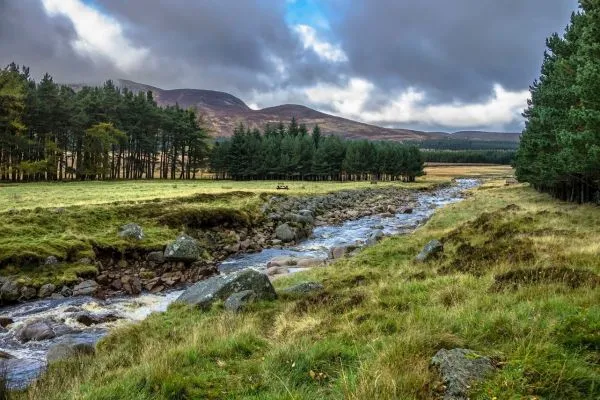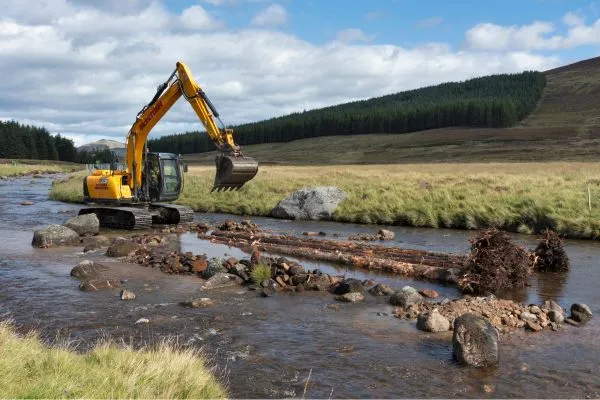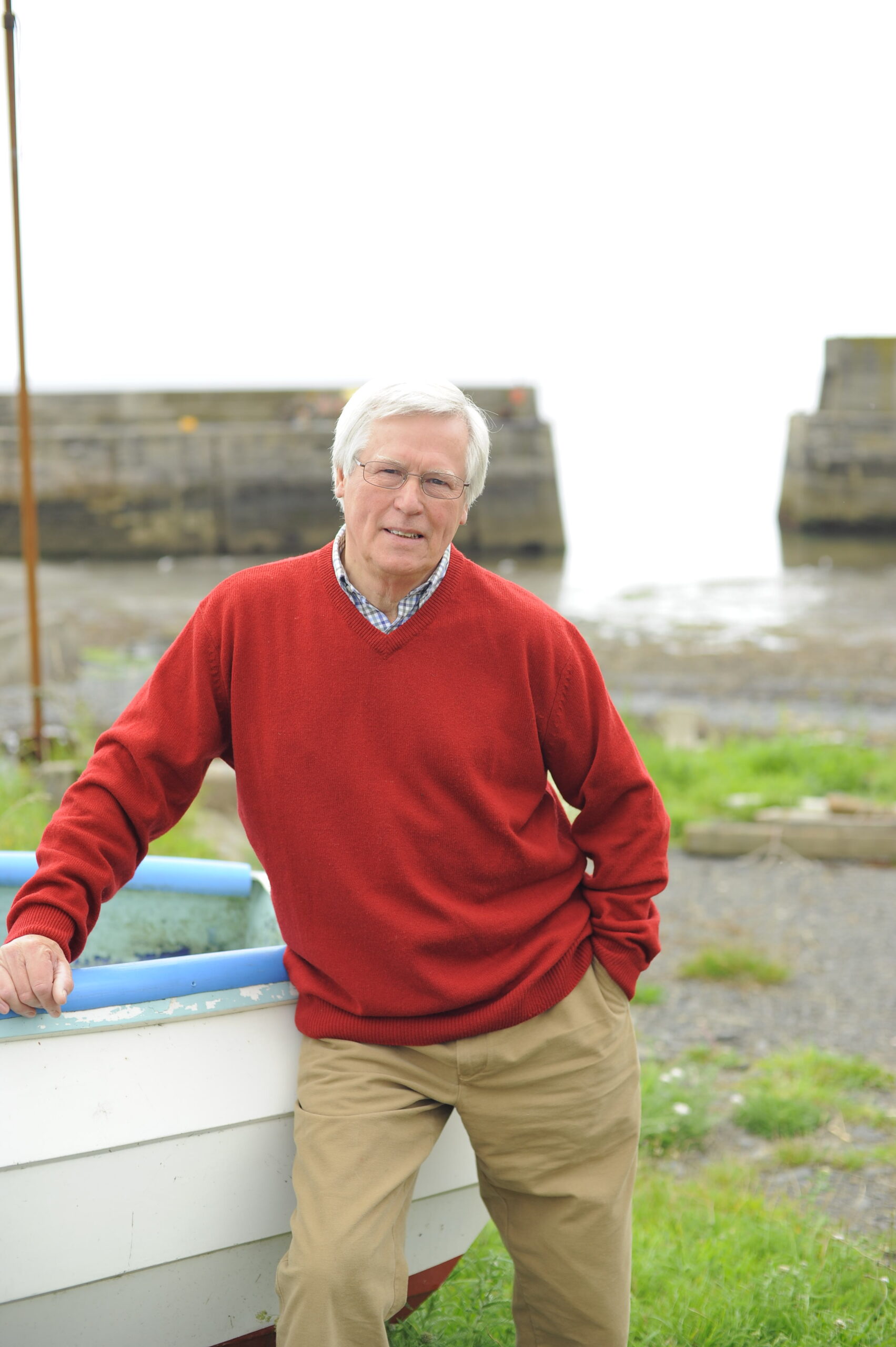While it may initially raise eyebrows, this pioneering approach is proving to be a game-changer in river restoration efforts across Scotland.

Dumping dead trees and deer bones into a river might at first seem a bizarre way of improving the health of its waters – but it’s working on the royal Balmoral Estate.
The trees create new habitats and improve flow on the River Muick (pronounced Mick) and the bones boost levels of phosphate, so no-one is taking the muicky! In fact, King Charles III has personally endorsed the scheme.
It is part of the Riverwoods Initiative, in which 18 organisations, including charities, landowners and government agencies, led by the Scottish Wildlife Trust, are working together to restore the country’s threatened rivers.
Watch: Find out more about the fascinating work involved in the Riverwoods Initiative
Trees once lined the banks of upland rivers but, says the initiative, centuries of logging, burning and grazing left them bare. Robbed of shade in a warming climate, the rivers are heating up and losing oxygen. Action is needed before fish and other aquatic life find it impossible to survive.
Working together and in harmony with nature is essential if we are to adapt to the challenges of climate breakdown and ecological collapse that threaten our food and water security.
It’s a fate facing many other UK rivers, with reports that none of the 40 or so in England that have protected habitats are in overall good health. Scotland is providing a blueprint which, according to James Wallace of the campaign group River Action, is an exemplar for community and landowner engagement. “We all need healthy rivers, abundant wildlife and clean freshwater,” he says. “Working together and in harmony with nature is essential if we are to adapt to the challenges of climate breakdown and ecological collapse that threaten our food and water security.”
It may look haphazard but in fact it is carefully designed... what we are doing is giving the river the opportunity to work its magic.
On the 20,200-hectare Balmoral Estate, where salmon numbers on the Muick have crashed in recent years, I’ve been hearing more about revival plans from the factor, Richard Gledson. “We are trying to give everything in the river a better chance,” he told me. “Where we haven’t [tree cover], we introduce it, which stabilises the banks, gives shade and provides nutrients in the form of leaves and insects. We have actually put in fallen trees from the estate, all wind-blown with their roots, at around 70 places. It may look haphazard but in fact it is carefully designed... what we are doing is giving the river the opportunity to work its magic.”

The force of the water against the trees creates ‘islands of life’, held in place by heavy boulders. They provide deep, cool pools for overheated fish, hiding places from predators and spawning grounds, while at the same time diverting and improving the flow. The hope is that newly planted trees will carry on the work when they die.
In an experiment to boost phosphate levels, bundles of deer leg bones (from Balmoral’s deer-management policy) are being deposited in the river. This should result in more algae, providing food for invertebrates which in turn are eaten by the fish. It’s a natural way of coming to the river’s rescue.

The dramatic fall in salmon numbers on the Muick is deeply worrying – and a major motivation for the project. Sixty years ago, for every 100 young salmon that left for the sea, between 30 and 40 would return. That number is down to two and three. Gledson’s target is to make conditions on the Muick as ideal as possible for those that do make it back, in the hope they will produce healthy, strong offspring.
The Balmoral project should prove that river restoration is both possible and financially viable.
Find out more
Check out our guides to the Scottish Amazon: The River Tay and Balmoral, as well as a picturesque walk around Balmoral Estate.
